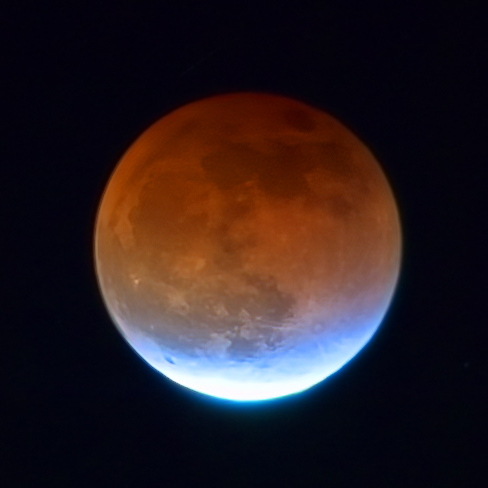some models predict all the colors of the rainbow can be detected at the edges of an eclipsed moon. here's an image at the end of the total eclipse with the color saturation boosted to bring out the color:
 |
| 5/15/22 lunar eclipse color saturation boosted |
A discussion on the cloudy nights forum covers it. There are 3 phenomenon leading to color on the eclipsed moon:
1. preferential scattering of shorter wavelength light as it passes through the earth's atmosphere (red sunset effect).
2. atmospheric refraction of light (prism effect).
3. preferential absorption of red light by ozone in the upper atmosphere (blue filter effect).
i'm only seeing red going to blue, but none of the rest of the rainbow in this image.
if you look below the blue section, there's a hint of teal (the blue level is equal to green, but never exceeded by it).
Here's an over-the-top article on the topic:
High-resolution spectroscopy and spectropolarimetry of the totallunar eclipse January 2019
High-resolution spectroscopy and spectropolarimetry of the totallunar eclipse January 2019
image details:
5/15/22
near pacific ridge trail head overlooking el moro canyon in crystal cove park (southern california)
nikon D850
poor transparency
F-S DX NIKKOR 55-300mm f/4.5-5.6G ED VR @ 300 mm F/5.6
5/15/22
near pacific ridge trail head overlooking el moro canyon in crystal cove park (southern california)
nikon D850
poor transparency
F-S DX NIKKOR 55-300mm f/4.5-5.6G ED VR @ 300 mm F/5.6
No comments:
Post a Comment